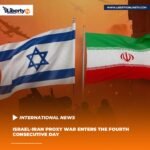Sierra Leone’s Forgotten Graves: A Civil War’s Haunting Shadow.
By Ibrahim Mansaray
More than two decades after Sierra Leone’s brutal civil war ended, the country continues to confront a haunting legacy: mass graves filled with the remains of civilians who became casualties of a conflict that claimed tens of thousands of lives. The Truth and Reconciliation Commission (TRC), established to document the causes and consequences of the war, described the scale of the violence in stark terms. “Civilians accounted for a large number of deaths at the hands of each faction,” the Commission reported. “All factions specifically targeted civilians.”
Many of those civilians were buried in mass graves, grim markers of massacres that occurred across the country as fighting escalated and people fled their homes. In some cases, the bodies were interred hastily because they died in unfamiliar places or because traditional burial rites were too dangerous to perform. In other cases, perpetrators chose to “dump” the dead deliberately, erasing both identity and dignity.
The Revolutionary United Front (RUF), a rebel group responsible for some of the most egregious atrocities, played a central role in this chapter of the war. The TRC documented how the RUF lured civilians out of hiding under the guise of community meetings, only to slaughter them en masse. These orchestrated killings left behind countless mass graves, each with a story untold.
Today, in the northern town of Lungi, one monument stands as a solemn reminder of this history. At the heart of the Civil War Memorial, built by the Centre for Memory and Reparations (CMR), lies a symbolic grave known as the Tomb of the Unknown Civilian. It contains soil gathered from mass grave sites across the country and handwritten reflections from Sierra Leoneans who came together to honour the memory of the dead.
For Wuya Kallon, manager of the CMR, memorials like this are vital to Sierra Leone’s transitional justice journey. “Memorials like The Tomb of the Unknown Civilian are essentially set up as preventative mechanisms to prevent the repetition of past violence and also to educate future generations,” she told Liberty Online TV.
But for Kallon and others, remembering is not enough. “We facilitate commemorative activities at the civil war memorial, where community members come to mourn and think about the past,” she explained. “This can inspire dialogue, effect change, promote healing and reconciliation.”
The memorial site has also become a learning space, hosting exhibitions on mass graves and attracting both locals and visitors seeking to understand the war’s human cost. Still, memorialisation efforts in Sierra Leone remain limited and under-supported.
According to Kallon, successive governments have failed to prioritise remembrance. “There’s a general notion of forgive and forget,” she said. “No priority is placed on memorialisation.” The result, she argues, is a worrying erosion of historical memory.
Bamie Charlie, a university graduate who was born after the war, echoed that concern. “The people who witnessed the war are leaving this world gradually, and they are dying with the knowledge and experience too,” he told Liberty Online TV. “If much memorialisation is not done, we could lose our war history.”
The TRC once sent investigators across Sierra Leone to identify and document over 100 mass grave sites. Behind each site, it said, “There is a tragic story.” The Commission warned that “the future preservation of these sites is in danger,” calling for urgent steps to protect them from decay or destruction.
Yet today, many of these sites lie neglected. “Most of these (mass graves) and other sites (with stories to tell)are dilapidated,” Kallon confirmed. Rather than build entirely new memory spaces, she urged, the focus should shift to “map, protect and develop memory strategies for these sites by liaising with community members.”
The TRC was clear in its recommendation: “Mass grave sites and other sites such as massacre and torture sites serve as powerful reminders of the abuses of the past and the need to ensure that they never occur again.” For Sierra Leone, protecting those sites may be more than an act of remembrance. It could be a step toward safeguarding the country’s future from repeating its painful past.
This story was produced with support from the African Transitional Justice Legacy Fund (ATJLF), through the Media Reform Coordinating Group (MRCG), under the project “Engaging Media and Communities to Change the Narrative on Transitional Justice Issues in Sierra Leone.”






